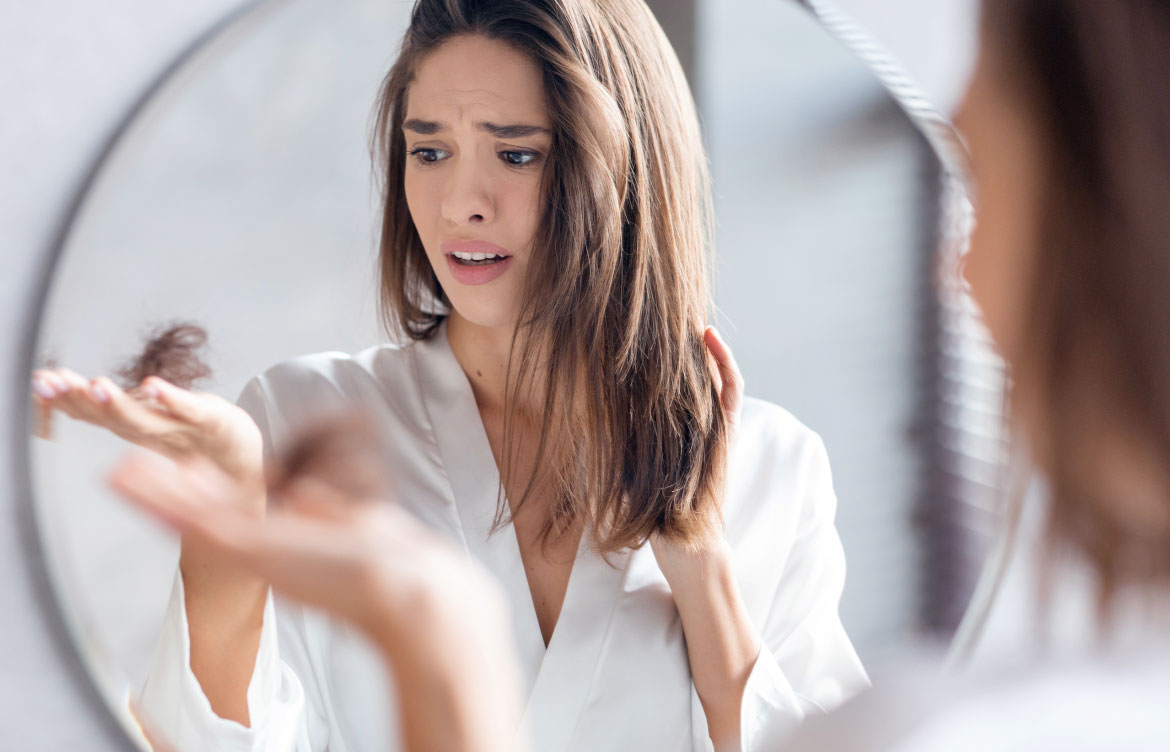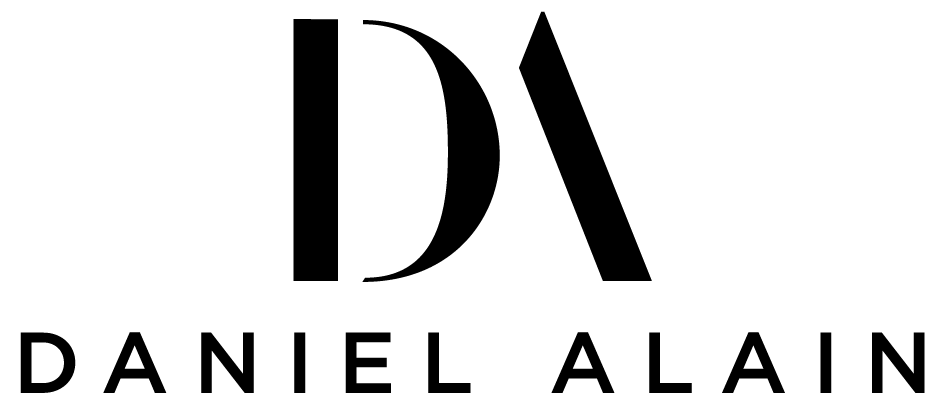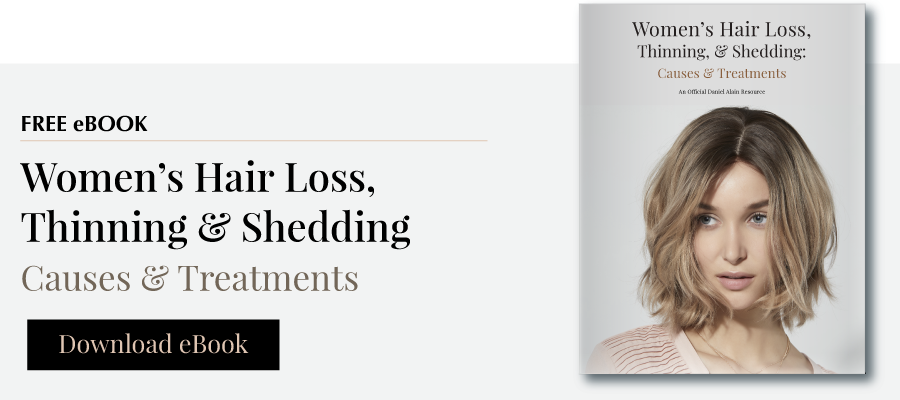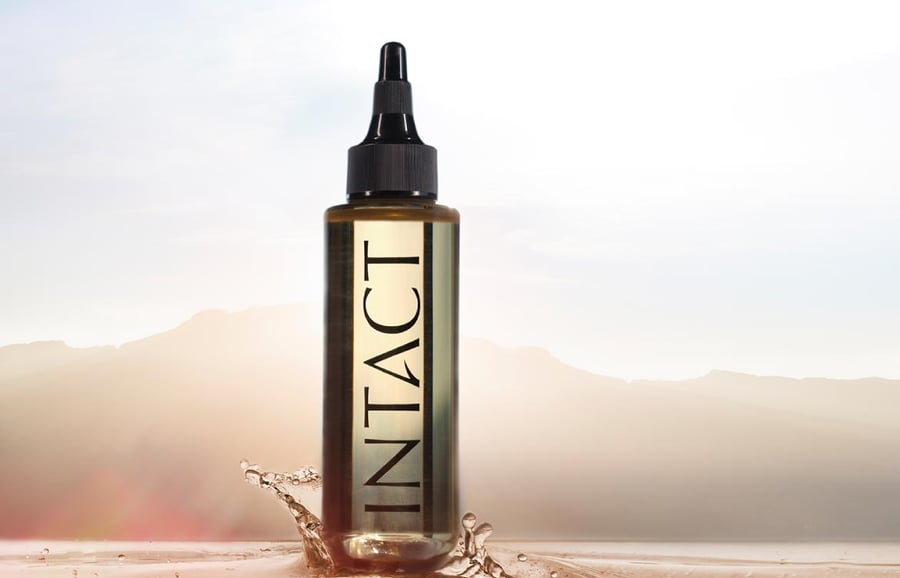How to Stop Excessive Hair Shedding

Finding a few strands in the shower is totally normal. But evidence of excessive hair shedding can be unsettling, especially when it comes out in clumps. Shedding anywhere from 50 to 150 hairs per day is part of a healthy hair growth cycle (specifically, a phase known as Exogen), but there are some tell-tale signs to look for if you're worried about your hair falling out.
Excessive hair shedding is common and caused by various lifestyle factors. While it’s alarming to see so much hair coming out, it doesn't necessarily mean you're going bald. There are tons of solutions available that can help stop excessive hair shedding and promote healthy hair growth.
Wondering what to do for excessive hair shedding? In this article, we’ll break down what causes hair to excessively shed, what signs and symptoms to look for, and what you can do about it.
WHAT CAUSES EXCESSIVE HAIR SHEDDING?
Excessive hair shedding can result from everything from stress, to diet, to hormones, to medication, to over-processing your strands, or even just a change in seasons. What does that mean for you? That it can be tricky to pinpoint the exact reason for your excessive hair shedding.
To get to the root of the problem, it's important to take note of any changes in your lifestyle or health that may have preceded this excessive hair shedding. Once you have a better idea of what might be causing the issue, you can start to look for aligned solutions.
Rapid Weight Loss
One of the most common causes of excessive hair shedding is a sudden weight change, whether weight loss or weight gain. When your body endures rapid changes, it can stress your system and temporarily cause a type of hair loss known as telogen effluvium.
Nutritional deficiencies can also lead to excessive hair shedding, so it's important to make sure you're getting enough vitamins and minerals in your diet. This type of excessive hair shedding is usually temporary and will stop once your weight has stabilized, and your diet is improved.
Stress & Anxiety
It's no secret that stress can cause a whole host of physical and mental health problems, from sleep disorders to digestive issues. And one of the side effects of stress is excessive hair shedding.
When stressed, your body goes into fight-or-flight mode and starts to release cortisol—a hormone that can wreak havoc on your hair. An increase in cortisol levels pushes your hair out of the active growth phase (also called the Anagen phase) and into the Exogen phase. Until you remove the major stressor from your life, excessive hair shedding will likely continue.
Giving Birth
The hormone fluctuations that happen postpartum are one of the major reasons for excessive hair shedding. After you give birth, all those hormones that gave you that envy-worthy pregnancy glow rapidly drop, and your strands will drop right along with them.
Thankfully, this response is usually temporary and will stop on its own within two to four months of giving birth.
Fevers & Recovering from an Illness
When you're sick (with a disease like COVID-19, for example), your body reserves all its energy to fight the infection—which means that hair growth takes a backseat. So, it's not uncommon to experience excessive hair shedding while fighting and recovering from an illness.
This type of excessive hair shedding is usually only temporary and will stop once your body has fully recovered.
Autoimmune Diseases
An autoimmune disease is a condition where your body's immune system mistakenly attacks healthy cells in your body. Alopecia Areata is a common autoimmune disease that causes patchy hair loss. Other autoimmune diseases that can cause excessive hair shedding or hair loss include:
- Lupus
- Hashimoto's disease
- Graves' disease
- Crohn's disease
- Rheumatoid arthritis
- Psoriasis
If you think you might have an autoimmune disease, it's important to see a doctor so they can diagnose and treat the condition.
Hormonal Changes
Hormonal imbalances—particularly those that affect estrogen levels—are among the most common reasons for excessive hair shedding in women. When your hormone levels rapidly shift due to changes such as puberty or menopause, one of the not-so-fun side effects can be excessive hair shedding.
So long as you're taking care and prioritizing your overall health, your hormones (and your hair) should regain their balance over time.
Surgery
Undergoing an invasive surgery is a stressful process. And when your body experiences any type of stress, excessive hair shedding can occur. A sudden change in blood flow or scarring trauma can cause your follicles to stop producing new hair—but only temporarily.
While this side effect usually starts a few weeks after surgery, it can last for up to six months. Once your body has healed and is back to its pre-surgery state, your body will likely stop excessive hair shedding and start growing new strands again.
Infections
Another one of the more health-related causes of excessive hair shedding is getting an infection. Both bacterial and fungal infections can inflame your hair follicles and cause excessive shedding. Here are the most common infections to look out for:
- Ringworm of the scalp
- Folliculitis
- Piedra
- Seborrheic dermatitis
Infections
When your body doesn't have enough iron, it can't produce hemoglobin—a protein that carries oxygen to your cells. And without oxygen, your cells (including your hair follicles) can't function properly.
The best way to get more iron and stop excessive hair shedding is to eat iron-rich foods or take an iron supplement. Some of the best foods to eat for increased iron levels are:
- Red meat
- Poultry
- Seafood
- Beans
- Spinach
- Kale
Diet
Not getting the nutrients your body needs can reflect the health of your hair. Crash diets or restrictive eating can lead to deficiencies in vitamins and minerals—like zinc, vitamin D, and omega-3 fatty acids—that are essential for healthy hair growth.
It's crucial to make sure you're getting enough of the right nutrients to support both your overall health and the health of your hair. A diet rich in protein, healthy fats, and complex carbs is always a good place to start.
Medications
Certain medications—particularly those used to treat cancer, arthritis, depression, heart conditions, and high blood pressure—can lead to excessive hair shedding as a side effect. Here are the medications that are often the reasons for excessive hair shedding:
- Birth control pills
- Mood stabilizers
- Acne medications that contain vitamin A
- Cholesterol-lowering drugs
- Cancer treatment drugs
- Antibiotics
- Steroids
- Antifungal drugs
- Epilepsy drugs, or anticonvulsants
- Hormone replacement therapy
- Weight loss drugs
- NSAIDs
- Antidepressants
- Beta-blockers
- Thyroid medications
- ACE inhibitors
- Anti-clotting drugs
- Diuretics
If you're taking any medication and start to experience more hair shedding than normal, be sure to talk to your doctor about other potential treatment options.
Lack of Sleep
Sleep is vital for overall health and well-being, but it's also essential for healthy hair growth. When you don't get enough sleep, your body goes into survival mode—meaning it starts to shut down non-essential functions like hair growth to conserve energy.
Preventive care is crucial to maintaining a strong mane. So if you're not getting enough rest, try to adjust your sleep schedule and ensure you get at least 7-8 hours of sleep per night to fix excessive hair shedding.
Tight Hairstyle
One of the most common but not as frequently discussed causes of excessive hair shedding is called traction alopecia. Traction alopecia is when your hair is pulled too tight—whether it's from ponytails, braids, cornrows, or weaves—too often and damages the hair follicles.
If you notice that you're starting to lose more hair than usual around your hairline or temples, it's important to give your hair a break from tight hairstyles and let your follicles recover. Traction alopecia can be reversed if it's caught early enough, but if it's left untreated, it can permanently damage your hair follicles and cause baldness.
Showering
How you treat your hair daily can also affect how much hair you shed. For example, if you brush your hair too often or too roughly, it can damage the hair follicles and lead to excessive shedding.
The same goes for shampooing—if you shampoo your hair too frequently, it can strip away the natural oils that protect and nourish your hair. Shampooing only 2-3 times a week and using a gentle touch on your strands is usually sufficient to keep your hair clean and healthy.
Heat Treatments
And finally, one of the biggest causes of excessive hair shedding is heat damage. Whether from curling irons, hair straighteners, or blow dryers, exposing your hair to high temperatures can damage the strands and follicles and lead to more shedding.
If you use heat treatments frequently, make sure to use a heat protectant spray beforehand and avoid using excessive heat whenever possible. Letting your hair air dry or using cool settings on your styling tools can help minimize heat damage and stop excessive hair shedding.
HOW TO TELL IF YOU ARE SHEDDING TOO MUCH HAIR
Like we said, finding a little hair on your pillow in the morning isn't cause for alarm—everyone sheds hair daily. But other signs can indicate you're losing more strands than normal.
You're Shedding More Than 100 Hairs a Day
According to the American Academy of Dermatologists, the average person loses between 50 and 100 hairs a day. Now, you don't have to single-handedly count every hair that falls out of your head, but there are a few telltale signs that can indicate you're shedding more than normal:
- You pull out several strands every time you run your hands through your hair.
- You're noticing thinning or bald patches.
- You wake up to clumps of hair on your pillow every morning.
- Your part is widening.
If you notice any of these signs, it's important to take action to stop excessive hair shedding.
Do the Pull Test
One simple way to tell if you're shedding too much hair is to do the pull test. To do this, just grab a small section of your hair (about 40-60 hairs) and lightly tug. If more than six hairs come out in the process, you may be shedding too much hair.
Do the pull test on various parts of your scalp to get a better idea of whether you're losing more hair than normal.
Consider Your Hair Texture
It's also important to pay attention to your hair texture when you're trying to determine if it's time to fix excessive hair shedding.
For example, people with curly, voluminous hair may appear to lose more strands because their curls can make it difficult to see individual hairs that have shed. However, this doesn't necessarily mean that curly-haired people are actually shedding more hair than straight-haired people—it's just harder to see.
Your Hair Drain is "Pillowy"
Next time you take a shower, take a peek at how much hair is circling your drain. If it has a pillowy or fluffy appearance, it could signal that you're shedding more hair than normal.
Just be mindful of the last time you ran a brush through your tresses before you do this experiment. Natural shedding hair could build up and make the drain look "pillowy", too.
what you can do to prevent excessive HAIR SHEDDING
Now that you've got a strong grasp on all the things that could contribute to all of that hair in your brush, it's time to learn what to do for excessive hair shedding.
Unlike many hair regrowth treatments, shedding is much more manageable and easy to fix. There are solutions galore to stop excessive hair shedding and restore your mane to its former glory.
Wanna know how to treat excessive hair shedding? Let's dive in.
Apply INTACT Anti-Hair Shedding Treatment
The first step in your battle to fix excessive hair shedding is to hang on to the hairs you have. INTACT's unique formula helps to stop hair loss by fortifying and strengthening your hair follicles, so you lose 77% less hair during high-shedding activities like shampooing and brushing.
INTACT uses our patented PiliLock® Sevilla Orange Complex to grip hair at the root and other plant-based nutrients to nourish and hydrate the scalp to prevent dryness. This gentle yet effective pre-shampoo treatment can be used every time you wash your hair. In fact, the more you use it, the stronger your strands become.
Eat a Balanced Diet
A balanced diet is important for optimal health, but it's also essential for keeping your hair healthy and beautiful. Eating a diet that's rich in vitamins and minerals can help to stop excessive hair shedding.
Some of the best foods for healthy hair include:
- Salmon: This fish is packed with omega-3 fatty acids, which are essential for healthy hair.
- Avocados: These green fruits are rich in biotin, a water-soluble vitamin that's essential for hair growth.
- Spinach: This leafy green is full of vitamins A and C, both of which are important for a healthy scalp.
- Walnuts: These nuts are another excellent source of omega-3 fatty acids.
- Eggs: Eggs are rich in protein and biotin, two important nutrients for healthy hair.
If you're not getting enough of these nutrients from your diet, you may want to consider taking a supplement.
Avoid Tight Hairstyles
The easiest way to fix excessive hair shedding caused by traction alopecia? Stop wearing tight hairstyles! This type of hair loss is caused by tension on the hair follicles, so it's important to give your strands a break from time to time.
Try loosening your ponytail or wearing your hair down more often. If you must wear your hair up, use gentle, loose styles instead of tight ones.
Get Enough Sleep
For your body to function at optimal levels—and keep your hair follicles happy and healthy—you need to get at least seven to eight hours of sleep every day. Any less, and you may also notice that your hair is thinner, weaker, and more prone to shedding.
Reduce Stress Levels
There's no way to eliminate all the stressors of modern life. But, if you can find ways to reduce your stress levels, it could help stop excessive hair shedding..
There are many different ways to reduce stress, so find the ones that work best for you. Some people find yoga or meditation helpful, while others prefer to exercise or do deep breathing exercises.
Try Supplements
If you're still struggling with excessive hair shedding, you may want to try supplements. Many different supplements claim to stop hair loss and promote hair growth, but not all of them are backed by science. Do your research and talk to your doctor before taking any supplements.
Some of the most promising supplements for hair loss include:
- Biotin: This water-soluble vitamin is essential for hair growth. It's found in many foods, so deficiencies are rare, but there are many self-reported claims from users that biotin supplements may promote hair growth,
- Iron: Iron deficiency is one of the most common causes of excessive hair shedding. If you're not getting enough iron from your diet, you may need to take a supplement.
- Zinc: Zinc is another nutrient that's essential for hair growth. It can be found in meat, seafood, and poultry. Supplementing with since has been shown to reduce hair loss in those with a zinc deficiency.
- Vitamin D: Low levels of vitamin D are common in those diagnosed with alopecia. Supplementing with vitamin D may improve hair loss and stop excessive hair shedding.
Eliminate Heat Treatments
If you really want to fix excessive hair shedding, you need to give your curling iron a break. Heat damage is one of the most common causes of excessive hair shedding, so it's important to take a break from heat treatments now and then.
Try letting your hair air dry more often or using gentle, heat-free styles like braids or buns. If you must use heat, make sure to use a heat protectant and keep the temperature on the lower setting.
Use a Scalp Treatment
Scalp treatments can help stop excessive hair shedding. by delivering nutrients and moisture to the scalp. By giving your head a little TLC every week, you can help keep your hair follicles healthy and reduce the amount of hair in your hairbrush,
There are many different scalp treatments you can try, but some of the most popular options include:
- Scalp massages: A scalp massage can help increase circulation to the scalp, which may promote hair growth. You can use your fingers or a designated scalp massager to massage your scalp for a few minutes daily.
- Hair oils: Coconut oil, jojoba oil, and Argan oil are just some of the hair oils that can protect your follicles and promote exfoliation, which also reduces hair fall.
- Exfoliation: Exfoliating your scalp can help remove dead skin cells and build-up that could clog your follicles. You can do a gentle scalp scrub once a week to help stop excessive hair shedding.
STOP EXCESSIVE HAIR SHEDDING asap AT DANIEL ALAIN

No one wants to lose their hair. And while excessive hair shedding is often temporary and easily fixable, it can result in permanent hair loss if left unaddressed. That's why it's important to stop excessive hair shedding as soon as you notice it.
At Daniel Alain, we specialize in helping people achieve the healthy, thick, and lustrous locks they've always wanted, no matter what stage of the hair loss journey they're in. We offer a variety of treatments and products that are specifically designed to fix excessive hair shedding, like our INTACT pre-shower treatment.
INTACT is a safe, affordable, clinically proven solution that can stop excessive hair shedding within the first use. So if you're looking for a way to keep your hair from falling out, look no further than INTACT.
Learn more about how INTACT can help stop excessive hair shedding.
At Daniel Alain, we aim to provide a 360-degree solution for hair shedding. No matter what's causing your hair strands to scatter, we have a treatment that can help stop it in its tracks and promote healthy growth.
From total coverage to reducing shedding, we have a solution that's right for you no matter what stage of the hair loss journey you're in. Our team of in-house hair shedding experts are on hand to help you choose the right treatment and answer any questions you may have. Book a consultation today!
book a free consultation
Our stylists will help you find the right hair loss solution just for you

Frequently Asked Questions
What is Hair Shedding?
Excessive hair shedding is losing more than the normal amount of hair. Everyone sheds approximately 50 to 100 hairs every day and losing more than that amount is considered excessive hair shedding.
What is the Best Treatment for Excessive Hair Shedding?
The best treatment for excessive hair shedding will vary depending on the underlying cause. For example, if the shed is due to a lack of nutrients, taking supplements may help. If the excessive hair shedding is due to heat damage, you'll need to give your hair a break from heat treatments.
In general, focusing on your health (getting enough sleep, eating a nutritious diet, reducing stress, etc.) and using anti-shedding treatments like INTACT can help fix excessive hair shedding.
Is it Normal to Shed 200 Hairs a Day?
No—shedding 200 hairs a day is considered excessive hair shedding. If you're losing that much hair, it's important to take action to stop the shed.
When Should I Be Concerned About Hair Shedding?
Hair shedding is cause for concern when you're losing over 100 hairs a day or if it's accompanied by other hair loss symptoms like thinning strands, receding hairline, or bald patches.
What is the Difference Between Hair Shedding & Hair Loss
Hair shedding is a normal process that happens when your hair follicles go through their natural growth cycle. Everyone sheds hair, but excessive hair shedding can indicate an underlying health condition.
Hair loss, on the other hand, is when you stop growing new hair. Hair loss can be caused by many different factors, including genetics, medications, and underlying health conditions. Hair loss is much more complicated to treat than hair shedding and can result in permanent hair loss.
How Long Does a Hair Shedding Cycle Last?
The hair shedding cycle —also known as the Exogen—lasts between two and five months on average. However, there are many reasons for excessive hair shedding that extend the cycle length and cause you to lose more strands than normal.
Can Hair Shedding Stop on its Own?
Yes—some causes of excessive hair shedding are temporary and will stop on their own within time, such as:
- Postpartum shedding: The hormonal changes that happen after you give birth can cause increased shedding for a few months before it returns to normal.
- Stress-induced shedding: If you're going through a lot of stress, it can lead to temporary telogen effluvium, which is when your hair follicles go into the resting phase, and you shed more hair than normal. The good news is that once the stressor is removed, your shedding should stop.
- Traction alopecia: This type of hair loss is caused by tight hairstyles that pull on your hair follicles and can lead to temporary shedding. If you stop wearing tight hairstyles, the shedding should also stop.
However, there are also many causes of excessive hair shedding that are chronic and won't stop on their own, such as:
- Hormonal imbalances: Conditions like hypothyroidism and PCOS can cause chronic hair shedding that won't stop without treatment.
- Autoimmune disorders: Autoimmune disorders like alopecia areata can cause chronic, excessive hair shedding that requires medical intervention.
- Nutrient deficiencies: If you're not getting enough nutrients, it can lead to chronic hair shedding. You'll need to address your nutrient deficiencies with supplements or a change in diet to stop the shed.
If your hair shedding doesn't stop on its own within a few months, it's important to see a doctor or dermatologist to rule out any underlying causes.
Which Lack of Vitamins Cause Hair to Shed?
While many vitamins and minerals can keep your hair healthy and luscious, there are only a few vitamin deficiencies that are linked to hair shedding. These include:
- Zinc
- Biotin
- Iron
- Vitamin D
If you think you may be deficient in any of these nutrients, you must talk to your doctor or a registered dietitian to see if you need to supplement.
What Months Does Hair Shed the Most?
Late summer and early fall are typically when hair shedding is at its peak. This is because the hot summer months can lead to dehydration, which can weaken your hair and cause it to shed more than usual.
Can You Prevent Hair Shedding?
You can prevent most causes of excessive hair shedding by following a healthy lifestyle and taking good care of your hair. This includes:
- Eating a balanced diet full of nutrients that are essential for healthy hair growth, like biotin, zinc, and iron
- Avoiding tight hairstyles that can pull on your hair follicles and lead to traction alopecia
- Managing any underlying health conditions that may be causing your hair shedding
- Minimizing stress as much as possible
Is INTACT Safe to Use on My Hair?
Yes—INTACT is a safe and effective way to stop excessive hair shedding. It's made with natural ingredients that have been clinically proven to reduce hair shedding by up to 77%. Plus, it's gentle enough as often as you wash your hair.
Learn more and try INTACT for yourself.
How Do I Properly Apply INTACT?
INTACT must be applied to dry hair before you shower. Let it sit for at least 30 minutes before rinsing it out. Use it consistently and often to increase the strength of your hair and fix excessive hair shedding.
Should I Use INTACT Every Day?
You should use INTACT as often as you wash your hair. So if you wash your hair every day, you should be using INTACT every day. If you wash it two or three times a week, that works too.
It's best to use INTACT every time you shower to get the most out of it, but we understand that not everyone has the time for that. Just make sure you're using it at least a few times a week for the best results.
Can INTACT Regrow My Hair?
No—INTACT is not a hair regrowth treatment. It's an anti-shedding treatment. INTACT will strengthen and fortify the strands you have so you don't lose any more but it will not promote any new hair growth.
Learn more and try INTACT for yourself.
What Happens If I Wash INTACT Out of My Hair in Less Than 30 Minutes?
INTACT will not be as effective if it's not left in for the full 30 minutes. So if you can, try to wait the full 30 minutes before rinsing out INTACT.





